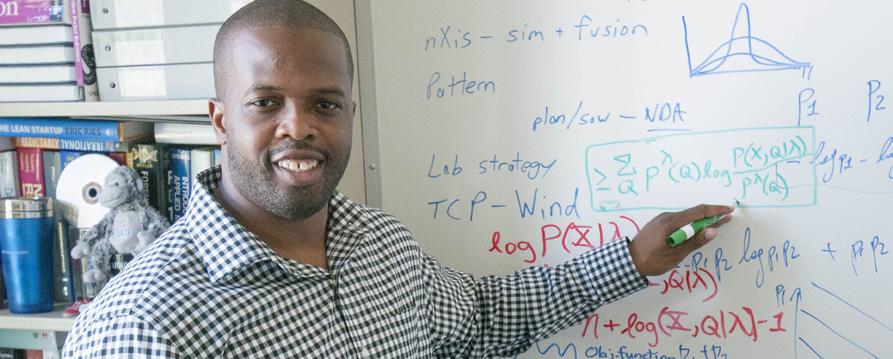INDUSTRIAL INTERNET OF THINGS ON CAMPUS
by Lango Deen ldeen@ccgmag.com
T
here’s no question about it: Data is the new dollar. And colleges are gearing up their graduates for a networked world. Whether you are a private corporation or the Department of Defense, it is probable your manifestation of the Industrial Internet of things (IIoT) involves sensors, a system or machine, or groups of machines, software associated with each, and quite a bit of data, explains Robin N. Coger, dean of the College of Engineering at North Carolina A&T State University and a mechanical engineering professor. Coger adds that the physical parts of the IIoT tend to be linked to the virtual parts via communication through a network. “Hence, threaded throughout the possibilities of the IIoT is the simple fact that its accomplishments will persistently be tested by those who seek to compromise its networks,” she said. “Considering all of the elements of the IIoT, what single academic major has the necessary skills to proactively defend against such attacks, detect and counter compromises when they occur, and design new solutions to reduce vulnerability to future attacks?”
‘A Cross-disciplinary approach works best’
Within A&T’s College of Engineering, they have found that the cross-disciplinary approach works best. Researchers across several disciplines—computer science, computer engineering, industrial and systems engineering, electrical engineering, and others –team together. “This is enabling our College’s researchers to extend what began as innovations in cyber-identity and evolutionary computing, to be extended to new frontiers critical to the reliability of the IIoT,” Coger said. At Virginia State University, computer-manufacturing engineering, computer science, and other related programs 16 USBE&IT | DIGITAL ISSUE 2017
Illustration by Bryan Davis
are also helping students explore real-time communication between sensors and networks that connect the physical to the cyber world. Integration is taking on several forms. “We are creating an Industry 4.0 lab, where students can study and research the application of Internet of Things (IoT) in manufacturing,” said Keith Williamson, dean of Engineering, Science and Technology and associate vice president for research and innovation. “Our assembly system consists of multiple assembly robots, automated material handling systems, and a vision control quality assurance system all connected to an ERP system through embedded sensors and RFID. Radio frequency identification (RFID) tags are intelligent bar codes that can talk to a networked system to track every product that you put in your shopping cart. Enterprise resource planning (ERP) is business process management software that allows organizations to use a system of integrated applications to manage the business and automate back office functions related to technology, services and human resources.
Industry 4.0
VSU’s Industry 4.0 lab allows students to gain hands on experience in creating IoT networks and will also be used to
www.blackengineer.com







